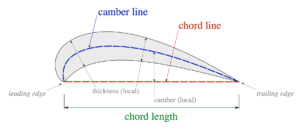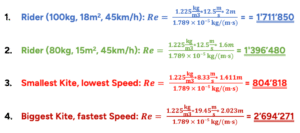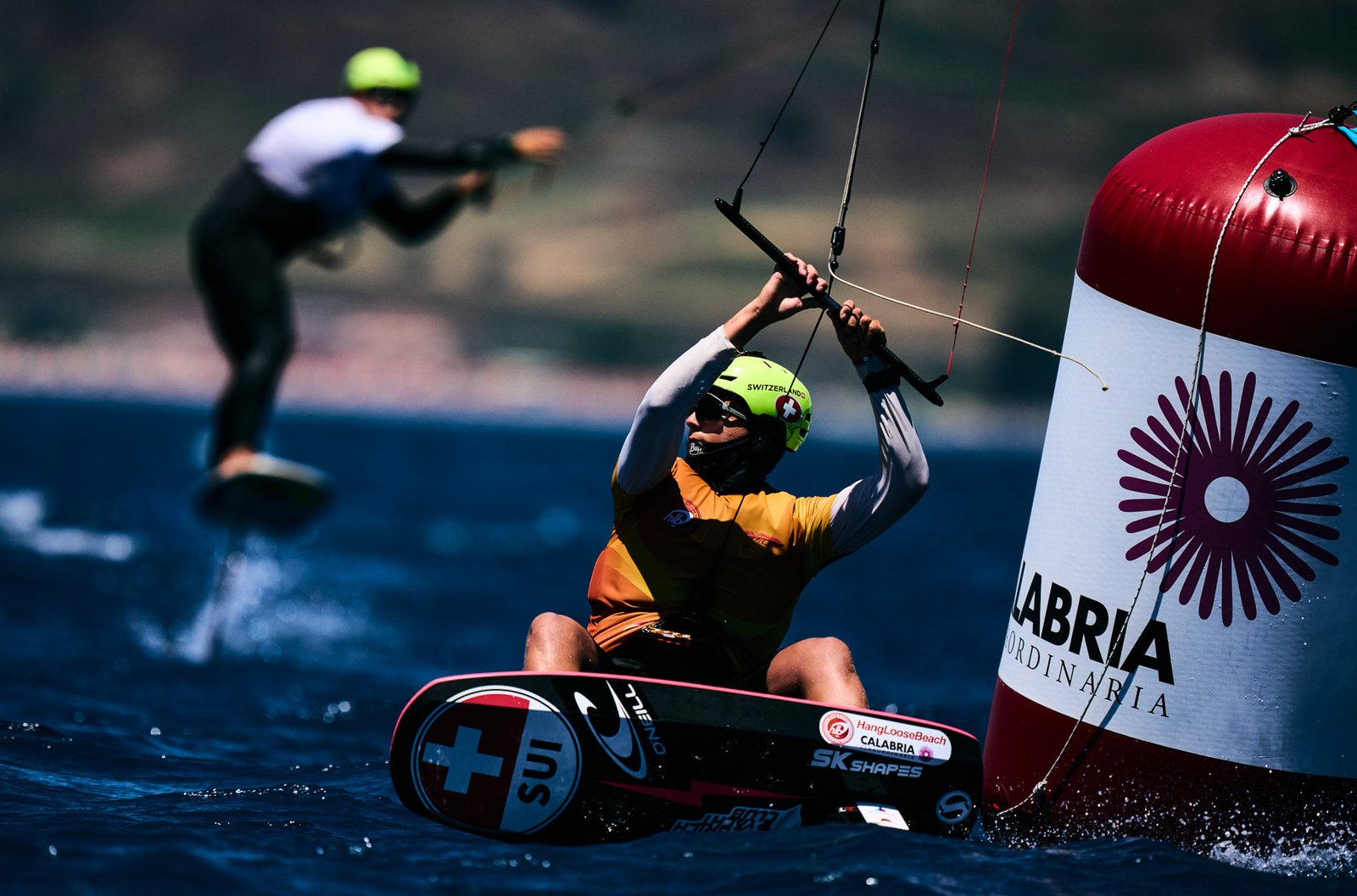The Weight Advantage: Unlocking Performance Secrets in Kitefoil Racing
Have you noticed top kite foil racers getting heavier? It’s a real thing! Heavier riders often finish in the top 10. They’re faster on the water, but why? We’ll explain the science behind why being heavier can make you super-fast in formula kite foil racing, clearing up any confusion.Let’s get straight to the heart of this fascinating question. We’ll explore two key scenarios to understand why heavier kite foilers can be faster:
- Same Kite, Different Weights: What happens when a heavy rider and a light rider use the exact same kite?
- Bigger Kite for the Heavy Rider: What if the heavy rider uses a bigger kite than the light rider?
Scenario 1: Same Kite, Different Rider Wing Loading
If a heavier rider and a lighter rider are using the same size kite, the key difference we’ll look at is the wing loading. This tells us how much weight each rider is putting on each square meter of the kite.
Wingloading = Total Rider Weight/Force [kg] / Kite Size [m2]
Therefore, the heavier rider experiences a greater load per square meter of their kite when using the same size as a lighter rider – this is what we call higher wing loading.
Effects of Higher Wing Loading in Kites:
- Higher Wind Range: Kites with higher wing loading can generally handle stronger winds without becoming uncontrollable or deforming excessively. The increased load allows them to maintain their shape and stability in higher wind speeds.
- Faster Flight Speed: For a given wind strength, a kite with higher wing loading will typically fly faster. This is because it needs to generate more lift to counteract the higher load, which is achieved by moving through the air at a greater velocity.
- More Direct and Reactive Feel: Higher wing loading can translate to a more direct and responsive feel for the rider. The kite reacts more quickly to control inputs.
- Better Performance in Stronger Winds: In strong winds, a higher wing loading can lead to better overall performance, including higher jumps and faster speeds, as the kite is designed to work efficiently under those conditions.
- Potentially Less Affected by Gusts: Due to their higher inertia and the need for more airflow to generate sufficient lift, higher wing loading kites might be slightly less affected by sudden gusts compared to very lightly loaded kites.
In conclusion, higher wing loading in kites offers several key advantages: a wider usable wind range extending into stronger conditions, increased flight speed for a given wind, more direct and reactive handling, enhanced overall performance in high winds (including jumping), and potentially improved stability in gusty conditions.
Effects of Lower Wing Loading in Kites:
- Better Performance in Light Winds: Kites with lower wing loading require less wind to generate sufficient lift and become flyable. They excel in light wind conditions where higher wing loading kites might stall or be sluggish.
- Slower Flight Speed: These kites tend to fly slower in the same wind conditions.
- More Forgiving Handling: Lower wing loading kites can often feel more forgiving and less aggressive, making them suitable for beginners or lighter wind cruising.
- Better Lift Generation in Light Winds: The larger surface area relative to the load allows them to generate more lift even with less airflow.
Basically, having a kite with lower wing loading helps in light wind. These kites fly with less wind, lift better even when it’s barely blowing, and go slower, which can be easier to handle. This helps lighter riders get started when the wind is weak and ride at a relaxed pace. But in kite racing, going slower doesn’t win you the race. Nowadays, pro riders are so good they can get their boards up on the foil even in very light wind by using special pumping technique. On top of that most races only start when the wind is steady and stronger than 6 knots. Once the heavier riders are flying on their foils in this kind of wind, the lighter riders don’t really have any advantage from their lower weight anymore.
Scenario 2: Bigger Kite for the Heavy Rider Reynolds Number
Usually, a lighter rider won’t use the same size kite as a heavier rider because it would be too powerful for them to control. Even if they were strong enough to hold on, it would take so much effort they couldn’t perform their best in a race. Also, they cannot bring the same wing loading on the kite as we explained above.
To keep things simple, let’s imagine two riders: one weighs 100kg, and the other weighs 80kg (20% lighter).
To make the wing loading (load per kite size) the same for both, the lighter rider needs a kite that’s 20% smaller. So, if the heavier rider uses an 18m² kite, the lighter rider would use a 15m² kite.
We’re imagining both kites have the exact same shape, just different sizes. Think of it like a photo that’s been shrunk down by 20%. The overall look, curve, and how long and wide it is staying the same, but everything – the specific shape of the kite’s profile, its width, and its length – is 20% smaller for the lighter rider. While the actual kite designs aren’t simply scaled down, we can use this simplification to clearly illustrate the performance differences between smaller and larger kites, especially since a smaller kite naturally has a smaller root chord.

source: Wikipedia (Chord length definition), https://commons.wikimedia.org/wiki/File:Chord_length_definition_%28en%29.svg (20.05.2025)
Now, to scientifically compare the performance of these two riders, we can use a crucial physical number: the Reynolds number.The Reynolds number is like a measure of how “smooth” or “rough” the airflow is over the kite. Benefit of a higher Reynolds number for kites:
A higher Reynolds number can help the kite fly a bit more efficiently in certain ways:
- Less drag: The air sticks to the kite’s surface better, reducing some types of drag.
- Better lift: The kite can sometimes generate slightly more lift before the airflow separates and the kite stalls.
Think of it like a smoother, faster flow of air can help the kite glide better and stay flying more easily. However, kites operate at relatively low Reynolds numbers compared to airplanes, and other factors like the kite’s shape and how you control it are very important too.

v = 12.5 m/s (45 km/h, 24.3 knots) , Race Speeds (30-70km/h, 8.33-19.45m/s, 16.2-37.8knots)
l (root chord length) = ≈ 2m (18m2) , ≈ 1.6m (15m2) → FLYSURFR VMG3 (9m2-21m2):1.411 – 2.023 m (source: Theo de Ramecourt, Kite Designer FLYSURFER)
ρ = 1.225 kg/m3 (Standard Atmosphere 15°C / 101.325 kPa)
μ = 1.789 × 10-5 kg/(m·s) (Standard Atmosphere 15°C / 101.325 kPa)

Based on the Reynolds number calculations for these four scenarios, a larger kite flown by a rider under identical conditions will experience a higher Reynolds number compared to a smaller kite.
Comparing the smallest race kite at its slowest speed with the largest kite at its fastest speed, we can establish the typical Reynolds number range in kite racing as being between around 1’000’000 and 3’000’000.

source: Aerospace Research Central, https://arc.aiaa.org/doi/10.2514/1.C034415 (17.05.2025)
A diagram published by the Aerospace Research Central indicates that for a conventional airfoil operating within this Reynolds number range (1’000’000 to 3’000’000), the lift-to-drag ratio (Cl/Cd) improves as the Reynolds number increases.
The lift-to-drag ratio (Cl/Cd) compares how much upward force (lift) an object generates versus how much resistance (drag) it creates moving through the air. A higher ratio means more efficient movement.
In simpler terms, a larger kite flown at a similar speed and the same wing load to a smaller kite will have a higher Reynolds number due to its larger chord (the width of the kite’s profile). This can contribute to a slightly better glide ratio (less drag for the same lift) and potentially improved handling and stall resistance. Think of it as the larger kite having a more “efficient” interaction with the airflow in certain conditions.
